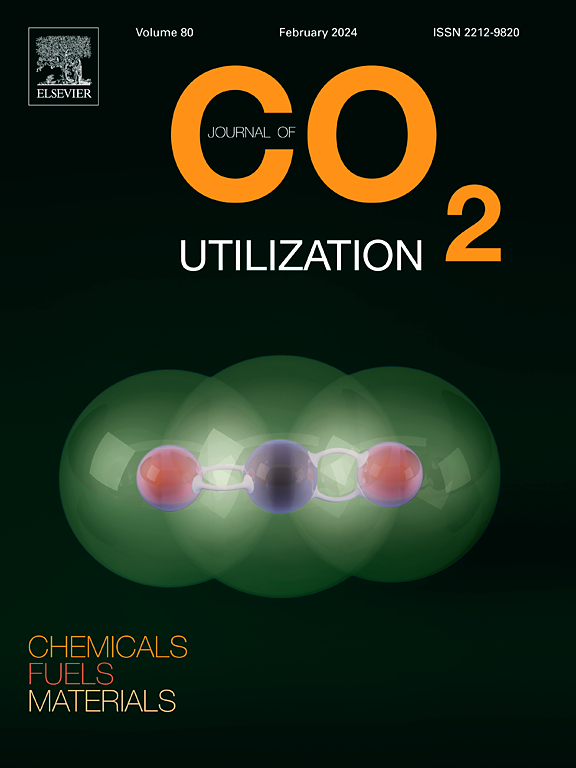评价生物相容性条件下单室电化学还原CO2生成甲酸的应用
IF 8.4
2区 工程技术
Q1 CHEMISTRY, MULTIDISCIPLINARY
引用次数: 0
摘要
电化学CO2还原反应(eCO2RR)为选择性生产甲酸酯(一种典型的c1化合物,可以作为生物合成的有价值的碳和能量来源)提供了高速率和高产率。使用带膜的双室(DC)电化学电池被认为是必不可少的,以避免电化学产物(即阳极氧和阴极甲酸盐)的混合,从而避免交叉反应,降低产率、法拉第效率(FE)和有效速率。然而,eCO2RR的单室(SC)设置可能更适合与生物工艺相结合。这项工作综合评估,使用不同的实验设置,在何种条件下,SC操作可以获得与直流系统相当的结果。 50毫升范围内,生物相容性的条件下,甲酸生产SC设置实现了14 %减少产量(146 mg SC L−1 h−1和170 mg L−1 h−1直流)和15 %降低铁(72.2 在SC和84.7 % % DC)。24次 h SC试验产生的最高甲酸浓度为1.8 g·L−1,FE为41 %,适合发酵过程。在没有膜的情况下,eCO2RR的SC操作可以减少能量损失和资本成本,尽管其代价是预期的速率和FE的降低。本文章由计算机程序翻译,如有差异,请以英文原文为准。
Evaluation of single chamber electrochemical reduction of CO2 to formate for application under biocompatible conditions
The electrochemical CO2 reduction reaction (eCO2RR) facilitates high rates and yields for the selective production of formate, a quintessential C1-compound that can serve as a valuable carbon and energy source for biosynthesis. The use of double-chamber (DC) electrochemical cells with membranes is deemed essential to avoid mixing of electrochemical products (i.e. anodic oxygen and cathodic formate) and thus cross-reactions that lower yields, Faradaic efficiency (FE) and effective rate. However, single-chamber (SC) setups for eCO2RR can be more suitable to combine with bioprocesses. This work comprehensively evaluates, using different experimental set-ups, the conditions under which SC operation can obtain results comparable to DC systems. At a 50 mL scale, under biocompatible conditions, formate production in the SC setup achieved a 14 % reduction in the production rate (146 mg L−1 h−1 for SC and 170 mg L−1 h−1 for DC) and a 15 % decrease in FE (72.2 % in SC and 84.7 % in DC). The highest formate concentration produced in 24 h SC experiments was 1.8 g·L−1 with FE of 41 %, a concentration appropriate for fermentation processes. The SC operation of eCO2RR to formate without a membrane could reduce energy losses and capital costs, although at the cost of an expected reduction in rate and FE.
求助全文
通过发布文献求助,成功后即可免费获取论文全文。
去求助
来源期刊

Journal of CO2 Utilization
CHEMISTRY, MULTIDISCIPLINARY-ENGINEERING, CHEMICAL
CiteScore
13.90
自引率
10.40%
发文量
406
审稿时长
2.8 months
期刊介绍:
The Journal of CO2 Utilization offers a single, multi-disciplinary, scholarly platform for the exchange of novel research in the field of CO2 re-use for scientists and engineers in chemicals, fuels and materials.
The emphasis is on the dissemination of leading-edge research from basic science to the development of new processes, technologies and applications.
The Journal of CO2 Utilization publishes original peer-reviewed research papers, reviews, and short communications, including experimental and theoretical work, and analytical models and simulations.
 求助内容:
求助内容: 应助结果提醒方式:
应助结果提醒方式:


